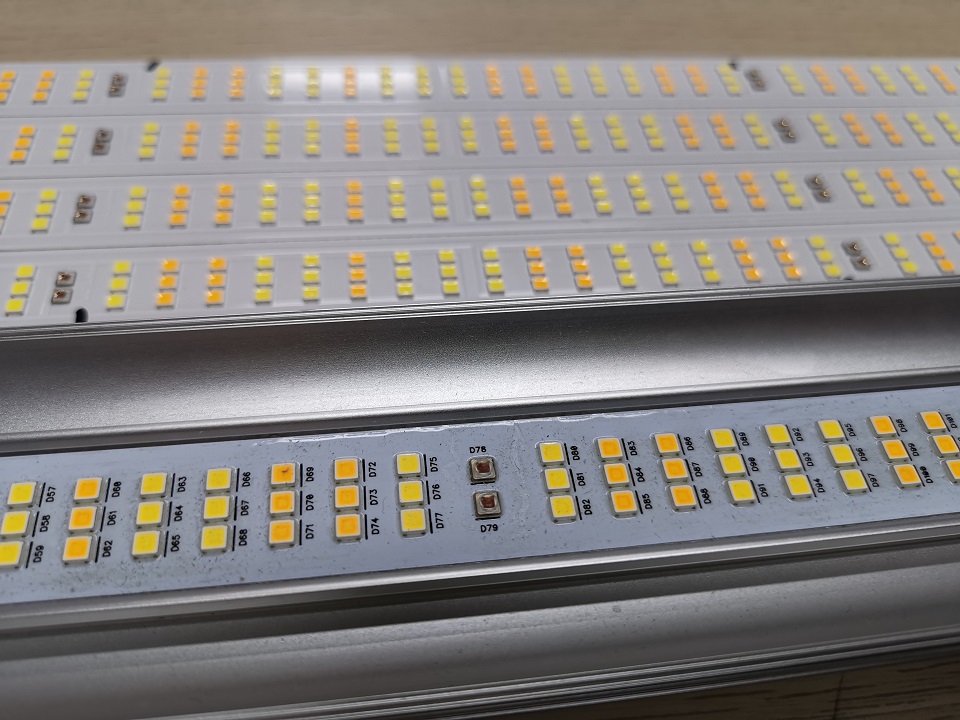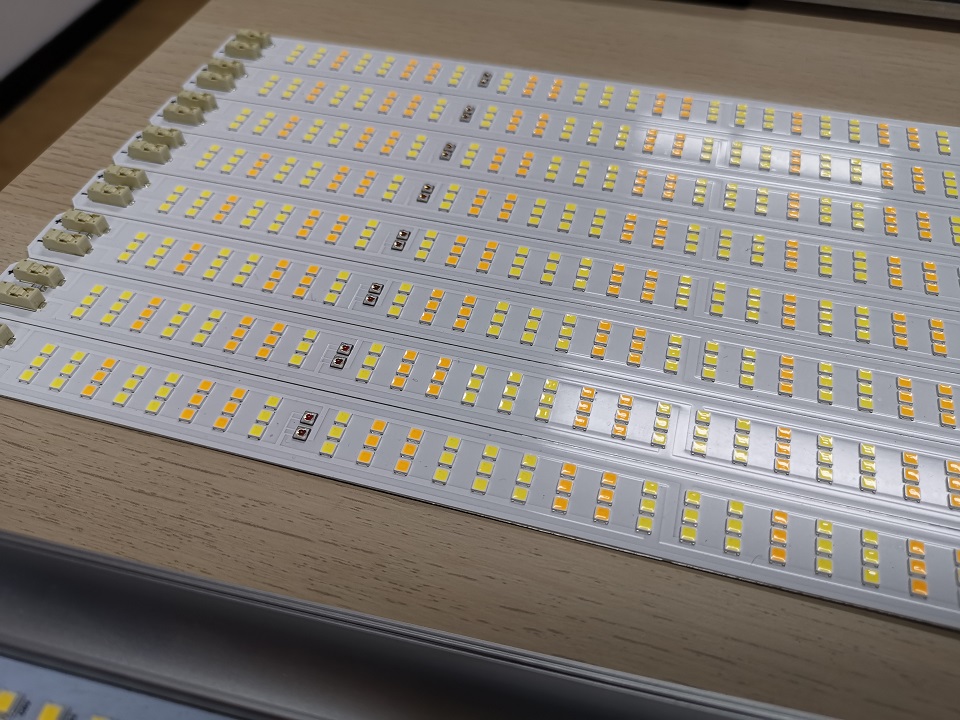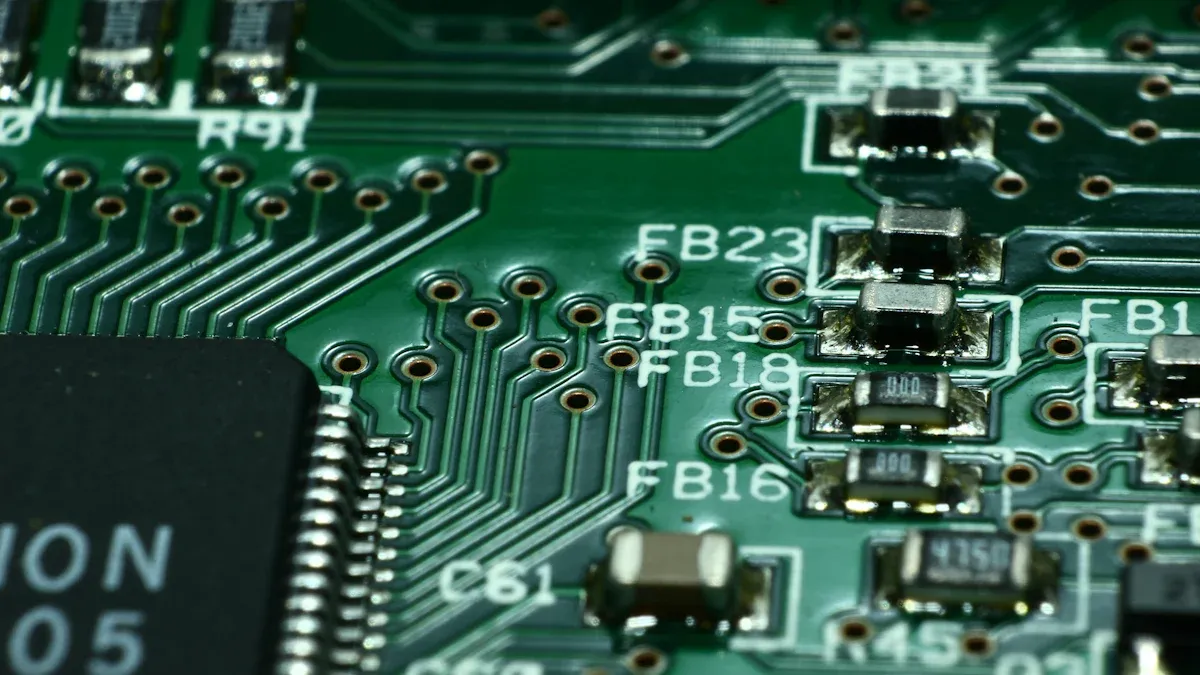Technical difficulties in smt assembly conformal coating processing

Conformal coatings help protect circuit boards from damage and dirt. However, technical difficulties during SMT assembly can weaken this protection. Issues like uneven layers, peeling, or bad chemicals may occur. These problems can make circuit boards less reliable. Studies show these issues often happen due to wrong methods or materials. This highlights the need for better solutions.
Key Takeaways
Apply the coating evenly to protect circuit boards well. Use precise tools and check quality to stop mistakes.
Clean surfaces carefully before adding the coating. Clean surfaces stick better and stop peeling, giving stronger protection.
Keep the environment steady while coating. Control temperature and humidity for good drying and curing.
Common Conformal Coating Defects in SMT Assembly

Inconsistent Coating Thickness
Uneven coating thickness is a frequent problem in conformal coatings. If the coating is not even, it may fail to protect electronics. Some parts might be left uncovered, while others have too much coating.
Material Usage Efficiency: Uneven layers waste material or leave areas unprotected. This increases costs and risks of product failure.
Process Control and Quality Assurance: Variations in thickness cause defects needing rework, lowering product reliability.
Performance and Reliability: Correct thickness is key for long-lasting devices. Uneven coatings can shorten their lifespan.
To fix this, use accurate application methods and check quality carefully during the process.
Delamination and Peeling
Delamination and peeling happen when the coating lifts off the PCB surface. This leaves the board open to moisture, dirt, and damage. Poor adhesion between the coating and PCB often causes this issue.
Prevent this by cleaning the PCB well before coating. Use materials that stick properly and control humidity during the process to avoid peeling.
Formation of Bubbles or Voids
Bubbles or voids can form in the coating, trapping air inside. These weak spots reduce the PCB's protection.
This happens due to bad application methods or temperature changes. To avoid this, use controlled techniques like spraying or dipping. Keep the environment stable during the process to reduce defects.
Cracking and Flaking
Cracks and flakes appear when the coating becomes hard and breaks. This can happen from heat, strain, or improper curing.
Cracks expose the PCB to damage, leading to failures. Prevent this by curing the coating correctly and using materials that handle stress. Regular checks can catch cracks early before they worsen.
Chemical Incompatibility with Components
Some coatings react badly with PCB materials, causing adhesion issues or failures. This happens when the coating and components are not compatible.
Evidence Type | Description |
|---|---|
Look for bubbles or surface cracks. | |
Adhesion Measurement | Use tape tests to check how well it sticks. |
Electrical Reliability | Test insulation resistance to ensure proper performance. |
Choose coatings that match your components to avoid these problems. Test compatibility before applying the coating to ensure it works well.
Causes of Conformal Coating Failures
Improper Surface Preparation
Preparing the surface is very important for conformal coatings. If cleaning or checking is skipped, dirt and oils can stop the coating from sticking. This causes peeling and weakens the coating, leaving the PCB open to harm.
Key Risks:
Dirt and oils make the coating peel or lift.
Water during preparation can cause bad curing, leading to electrical shorts.
Cloudy coatings often mean water messed up the curing process.
To prevent these problems, clean surfaces well and check them carefully. Use coating materials properly and avoid using old or dirty batches.
Environmental Factors Affecting the Conformal Coating Process
The environment affects how well conformal coatings work. Dust and small bits of paper can ruin the coating process. These things can also mess up soldering and printing quality.
Critical Considerations:
Big particles, like cotton fibers, can damage the coating layer.
Changes in temperature and humidity can stop the coating from drying right.
Keep the workspace clean and control temperature and humidity to avoid these issues.
Incorrect Material Selection
Picking the wrong coating material can cause big problems. For example, in 1998, a satellite failed because tin whiskers grew on pure tin instead of tin-lead surfaces. This shows how important it is to choose the right coating material.
Material Selection Errors:
Wrong materials can react badly with PCB parts, causing peeling.
Bad choices can lead to electrical shorts or less reliable boards.
Test the coating material with PCB parts before using it. This helps ensure the coating works well and lasts longer.
Errors in Conformal Coating Application Methods
Mistakes during application are common causes of coating problems. Using brushes or sprays by hand can make layers uneven. Oddly shaped surfaces can make this even harder.
Common Issues:
Uneven layers leave parts of the PCB unprotected.
Poor handling during preparation, application, or drying can cause flaws.
Use better methods or machines to apply coatings evenly. Machines help reduce mistakes and improve coating quality.
Insufficient Curing or Drying Processes
Drying and curing are very important steps for coatings. Not enough drying time or bad curing can cause cracks or weak spots. These problems make the coating less protective.
Key Problems:
Not drying long enough makes the coating easy to damage.
Bad curing creates weak areas that don’t protect well.
Make sure drying and curing times match the coating material. Check the coating during curing to catch problems early.
Best Practices for Conformal Coating Application by LTPCBA

Making Application Methods More Reliable
To get even coatings, use accurate application methods. Automated tools, like spray machines, help cover PCBs evenly. They also lower mistakes caused by people, especially on tricky designs.
Helpful Tips:
Apply thin layers instead of one thick coat. This avoids problems.
Clean PCBs with plasma treatment to make coatings stick better.
Pick coatings tested under IPC-CC-830C or UL94V-0 for safety.
Studies suggest UV LED curable coatings work well on sharp edges.
Managing Environmental Conditions During Coating
Temperature and humidity affect how coatings turn out. Dust and dirt can ruin the coating and cause defects.
Title | Details |
|---|---|
Talks about issues in vacuum-applied coatings. | |
Solvent Effects on Parylenes | Explains how solvents impact Parylene coatings. |
Keep the workspace clean and control the environment. This helps coatings dry and cure properly, making them stronger.
Doing Careful Quality Checks
Checking for problems is important before shipping products. Final inspections catch uneven coatings, scratches, or broken parts. Fixing these early ensures better products and happier customers.
Using UV-Curable Coatings for Faster Results
UV-curable coatings dry quickly under UV light. They stop liquid from spreading to parts and handle heat changes well. These coatings also allow thicker layers for better protection.
Quick drying saves time during production.
Heat resistance makes products last longer.
Thicker layers give stronger protection.
Covering Sharp Edges Properly
Sharp-edge techniques protect oddly shaped parts. Tools like the Select Coat SC-280 apply coatings fast and neatly.
Applicator | Benefits | Speed | Edge Control |
|---|---|---|---|
Select Coat SC-280 | Fast, neat edges | ~750 mm/sec | Better for tricky areas |
SC-350 Select Spray | Even coats, tight edges | Industry-leading | Precise near no-coat zones |
These tools make coatings more accurate and reduce mistakes like cobwebbing. This improves the coating's overall quality.
Problems with conformal coating include uneven layers, peeling, and cracks. These often happen due to bad preparation, wrong materials, or poor conditions. Fixing these needs careful methods and a controlled workspace.
Tip: Check thoroughly and use advanced tools for better coatings.
Using smart practices helps keep quality steady and protects your boards well.
FAQ
How can you fix problems from bad curing?
Make sure curing follows the coating material's instructions. Keep the environment steady to stop cracks, peeling, or weak areas.
What is the safest way to take off a conformal coating?
Use special solvents or tools to remove the coating. Pick the method based on the coating type and how delicate the PCB is.
Why is cleaning the surface important before coating?
Cleaning gets rid of dirt and oils. This helps the coating stick well and stops it from peeling or coming off later.
See Also
Key Considerations for SMT Assembly of Rigid-Flex PCBs
Critical Factors for VIPPO PCB Boards in SMT Assembly
Understanding SMT and DIP Assembly for PCBA Uses
Ensuring SMT Assembly Standards for Automotive Product Compliance
Designing PCBs for Optimal SMT Processing and Manufacturability
